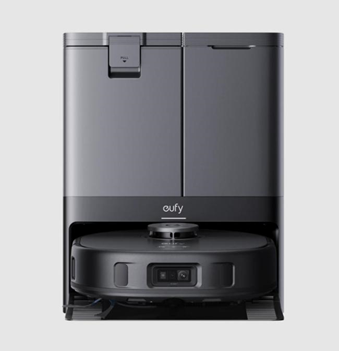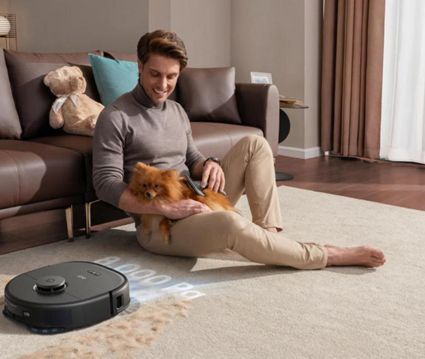Floor cleaning has come a long way from the days of heavy upright vacuums that needed to be dragged from room to room. Today, robot vacuums glide across floors almost silently, promising to handle daily dust and crumbs without effort. Many people now find themselves wondering whether these compact, self-operating machines can really match or even surpass the cleaning power of traditional vacuums. Understanding their strengths and differences can help you choose the right option for your home and lifestyle.

Cleaning Performance and Effectiveness
Deep Cleaning Power and Debris Removal Capability
Traditional vacuums are known for their powerful motors and strong suction, which make them highly effective for deep cleaning tasks, such as removing embedded dirt and pet hair from carpets. At the same time, robot vacuums have seen major advancements in performance, now offering robust suction power that effectively handles daily cleaning and helps prevent the accumulation of dust and debris. They excel at maintaining consistently clean floors with minimal effort, working seamlessly alongside traditional vacuums to provide a comprehensive cleaning routine. With a robot vacuum managing everyday upkeep, you can enjoy cleaner floors every day while reserving traditional vacuuming for occasional deeper cleans.
Consistency and Coverage Across Different Floor Types
One advantage of robot vacuums is their ability to clean consistently without missing areas, especially on hard floors. They follow programmed paths and use sensors to cover the whole space, reducing the chance of skipping spots. Traditional vacuums rely on the person using them, which can lead to uneven cleaning if you are in a hurry or tired. Robot vacuums can also switch between different floor types without stopping, keeping the cleaning flow smooth across tiles, wood, and rugs. This consistency is useful for busy households where floors collect dust quickly, but time is limited.
Convenience and Daily Maintenance
Automated Scheduling and Hands-Free Operation
Robot vacuums shine in terms of convenience, especially with their scheduling features. You can set them to run while you are at work or asleep, so your floors stay clean without you lifting a finger. This hands-free operation fits naturally into modern routines, where time for housework can be hard to find. Traditional vacuums require your active effort and attention every time, which can be tiring after long days. By quietly cleaning on their own, robot vacuums make it easier to maintain a tidy home without adding extra chores to your schedule.
Effort Required for Operation and Monitoring
Using a traditional vacuum means setting aside time, plugging it in, and moving it around furniture and rugs, which takes physical effort. It also requires more frequent emptying of larger dust bins and replacing filters or bags. Robot vacuums, on the other hand, need far less daily attention. You may only need to empty their small dustbins and clean the brushes once or twice a week, depending on your home’s size and how much dust builds up. While they still need some care, the amount of effort is much lower, which can make cleaning feel less overwhelming.
Specialized Features for Different Floor Types
Hardwood and Delicate Surface Protection
Robot vacuums are often designed with soft brush rolls and smooth wheels to avoid scratching delicate floors like hardwood or laminate. Their lightweight design means they apply less pressure, reducing the risk of scuff marks or dents. Traditional vacuums can be heavier and have stiff bristles, which might be too harsh on sensitive finishes if not used carefully. If your home has large areas of hardwood or tile, a robot vacuum can be gentler and safer for everyday use. Their built-in sensors also help them navigate without bumping furniture too hard, which adds another layer of protection for your floors.
Carpet Cleaning Performance and Adaptability
Carpets demand stronger suction and deeper brushing, and this is where traditional vacuums often perform better. Their powerful motors and rotating brush bars can lift embedded dirt that robot vacuums sometimes miss. However, newer robot vacuums can detect carpeted areas and automatically boost suction to clean them more effectively. They may still take longer to achieve the same level of deep cleaning, but their ability to clean daily helps prevent dirt from becoming deeply embedded in the first place. This steady maintenance can keep carpets looking fresh and reduce the need for frequent deep cleans.

Cost and Long-Term Value Comparison
When comparing costs, traditional vacuums usually have a lower initial price, while robot vacuums are often more expensive upfront. However, the long-term value depends on how you use them. A robot vacuum can save hours of manual cleaning time each week, which is especially valuable for busy households. They also help maintain cleaner floors daily, potentially extending the life of carpets and finishes. Traditional vacuums may last many years and require fewer repairs, but they do not offer the same time-saving benefits. Considering both time and money, robot vacuums can be worth the investment if convenience and routine cleanliness are your top priorities.
Conclusion
Choosing between a robot vacuum and a traditional vacuum depends on your lifestyle, floor types, and how you prefer to clean. Traditional vacuums remain strong for deep cleaning carpets and handling heavy messes, while robot vacuums excel at keeping floors clean every day with minimal effort. For homes with a mix of hard floors and rugs, using both can be the perfect balance—robot vacuums for daily upkeep and traditional vacuums for occasional deep cleans. And if you are looking for the best robot vacuum for hardwood floors, eufy offers excellent products that combine strong cleaning performance with careful floor protection. With the right choice, you can keep your home spotless while saving time and energy for the things that matter most.
